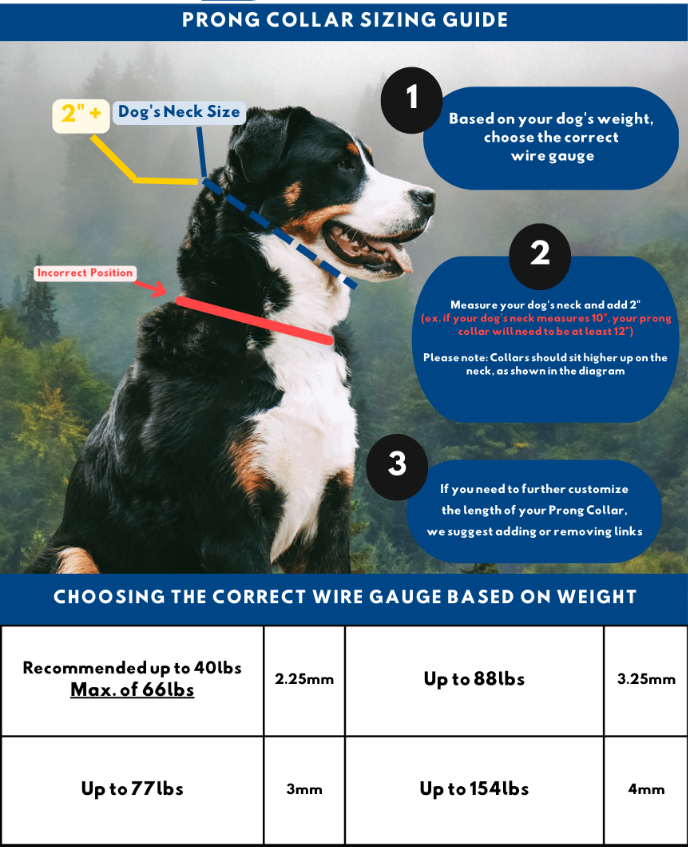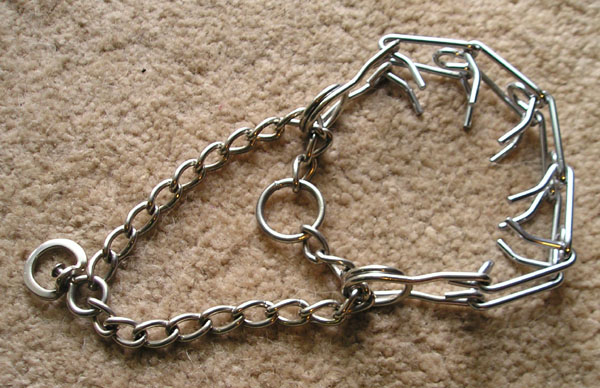Prong collars, also known as pinch collars, are commonly used as training tools for dogs. They are designed to provide a quick and effective correction when a dog pulls or behaves in an undesirable manner.
However, it is crucial to ensure that the prong collar fits correctly to prevent any harm or discomfort to the dog.
In this topic, we will provide some guidelines to help you choose the right prong collar size for your furry friend so you can train your pup without the pinch (or at least, with less of it).
What Size Prong Collar For My Dog?

When it comes to prong collars, proper sizing is essential. A prong collar that is too tight can cause discomfort or pain to the dog, while one that is too loose may not be effective in training.
Here are the steps you can follow to determine the right prong collar size for your dog:
Step 1: Measure your dog’s neck
The first step in choosing the right prong collar size for your dog is to measure its neck.
Use a soft measuring tape to measure the circumference of your dog’s neck at the widest point, just behind the ears.
Make sure the tape or string is snug but not too tight, and take note of the measurement in inches.
Step 2: Add two inches to the measurement
Once you have your dog’s neck measurement, add two inches to it. This will give you the minimum length for the prong collar that you should use.
For example, if your dog’s neck measures 14 inches, you should add two inches to get a minimum length of 16 inches for the prong collar.
Step 3: Select the appropriate size of prong collar
Prong collars come in different sizes, with varying numbers of prongs. Read here to get three main sizes of prong collars.
Choose a prong collar that matches the minimum length you calculated in step 2. Be sure to select a collar that has enough prongs to fit snugly around your dog’s neck without being too tight.
Step 4: Check the fit
Once you have the prong collar, put it on your dog and check the fit. The prong collar should fit snugly, but not too tight. You should be able to fit two fingers between the collar and your dog’s neck.
In case the collar is too loose or too tight, you may need to add or remove prong links to adjust the fit accordingly.
Putting a prong collar over a dog’s head is not the correct way to position the collar. If the collar can be easily slipped over the dog’s head, it will not be effective in controlling the dog’s behavior and will likely slide too far down the neck, causing discomfort or injury.
It’s important to properly fit the prong collar by unfastening it and placing it around the dog’s neck, ensuring that it sits snugly behind the ears and under the jawline.
Prong Collar Sizes

There are generally three main sizes of prong collars:
- Small: Small prong collars typically have a length of around 16 inches and are designed for dogs with neck sizes of up to 14 inches. They usually have smaller and lighter prongs and are suitable for small breeds like Chihuahuas, Yorkshire Terriers, and Miniature Pinschers.
- Medium: Medium prong collars have a length of around 22 inches and are designed for dogs with neck sizes between 14 and 20 inches. They usually have prongs that are slightly larger and heavier than those of small prong collars and are suitable for breeds like Cocker Spaniels, Beagles, and Australian Shepherds.
- Large: Large prong collars have a length of around 28 inches and are designed for dogs with neck sizes of 20 inches or more. They have the largest and heaviest prongs and are suitable for large breeds like German Shepherds, Rottweilers, and Great Danes.
Remember, prong collars should only be used under the guidance of a professional dog trainer or behaviorist. Improper use of a prong collar can cause injury to your dog or exacerbate behavioral problems.
If you have any doubts or concerns about using a prong collar, consult with a qualified professional.








